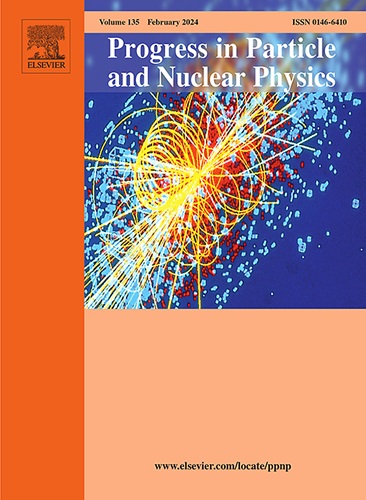Precise muon detection with novel micropattern gaseous detectors
IF 17.9
2区 物理与天体物理
Q1 PHYSICS, NUCLEAR
引用次数: 0
Abstract
The luminosity frontier in particle physics, in particular the high-luminosity LHC, poses a new level of challenges for the detection of muons. In consequence, muon systems had to evolve into large-scale tracking systems with high spatial and time resolution. Especially the forward regions of the LHC experiments ATLAS and CMS will be challenged by high particle rates and the resulting irradiation, while they need to identify and efficiently trigger the muons from signal events. A new type of gaseous detectors – micro-pattern gas detectors – plays a crucial role in the quest of meeting these goals. This next generation of muon systems had to overcome several technological challenges, like mass production of large-area detectors and high-voltage stability. Two technologies of micropattern gas detectors were identified for the upgrades of the muon forward systems of ATLAS and CMS. This article focuses on their development, implementation and performance. At the end, examples of promising R&D for further developments of future muon systems are summarized.
用新型微图样气体探测器进行精确的μ子探测
粒子物理学中的光度前沿,特别是高光度大型强子对撞机,对μ子的探测提出了新的挑战。因此,μ子系统必须发展成为具有高空间和时间分辨率的大规模跟踪系统。特别是在大型强子对撞机实验的前方区域,ATLAS和CMS将面临高粒子率和由此产生的辐射的挑战,同时它们需要从信号事件中识别和有效触发μ子。一种新型的气体探测器——微模式气体探测器——在实现这些目标的过程中起着至关重要的作用。下一代μ子系统必须克服几个技术挑战,比如大规模生产大面积探测器和高电压稳定性。针对ATLAS和CMS的μ子前向系统的升级,确定了两种微模式气体探测器技术。本文主要关注它们的开发、实现和性能。最后,总结了对未来μ子系统进一步发展有前景的研发实例。
本文章由计算机程序翻译,如有差异,请以英文原文为准。
求助全文
约1分钟内获得全文
求助全文
来源期刊

Progress in Particle and Nuclear Physics
物理-物理:核物理
CiteScore
24.50
自引率
3.10%
发文量
41
审稿时长
72 days
期刊介绍:
Taking the format of four issues per year, the journal Progress in Particle and Nuclear Physics aims to discuss new developments in the field at a level suitable for the general nuclear and particle physicist and, in greater technical depth, to explore the most important advances in these areas. Most of the articles will be in one of the fields of nuclear physics, hadron physics, heavy ion physics, particle physics, as well as astrophysics and cosmology. A particular effort is made to treat topics of an interface type for which both particle and nuclear physics are important. Related topics such as detector physics, accelerator physics or the application of nuclear physics in the medical and archaeological fields will also be treated from time to time.
 求助内容:
求助内容: 应助结果提醒方式:
应助结果提醒方式:


